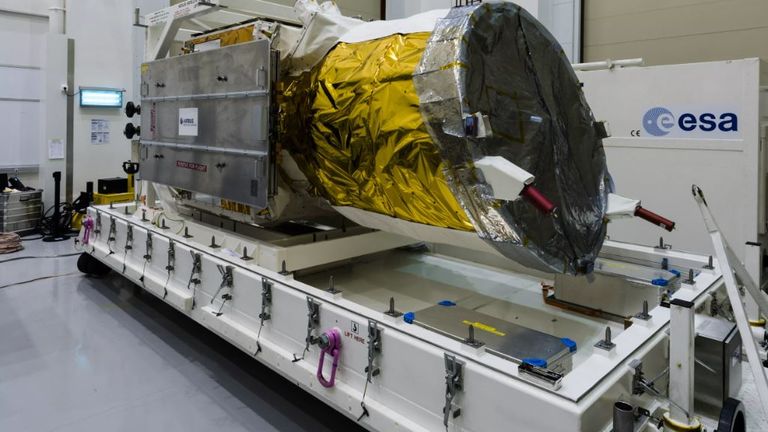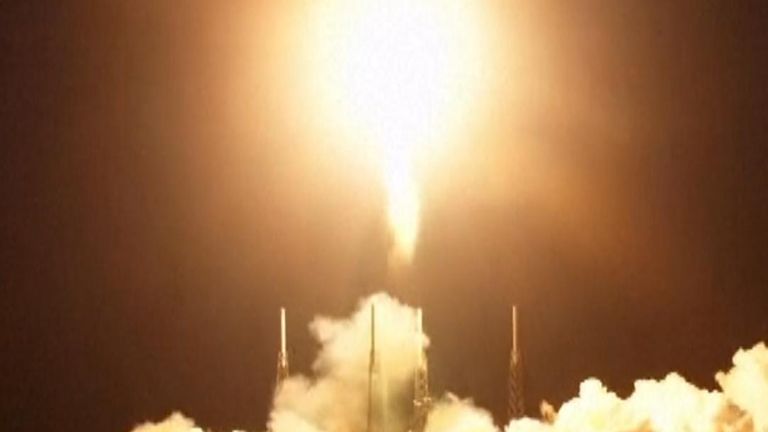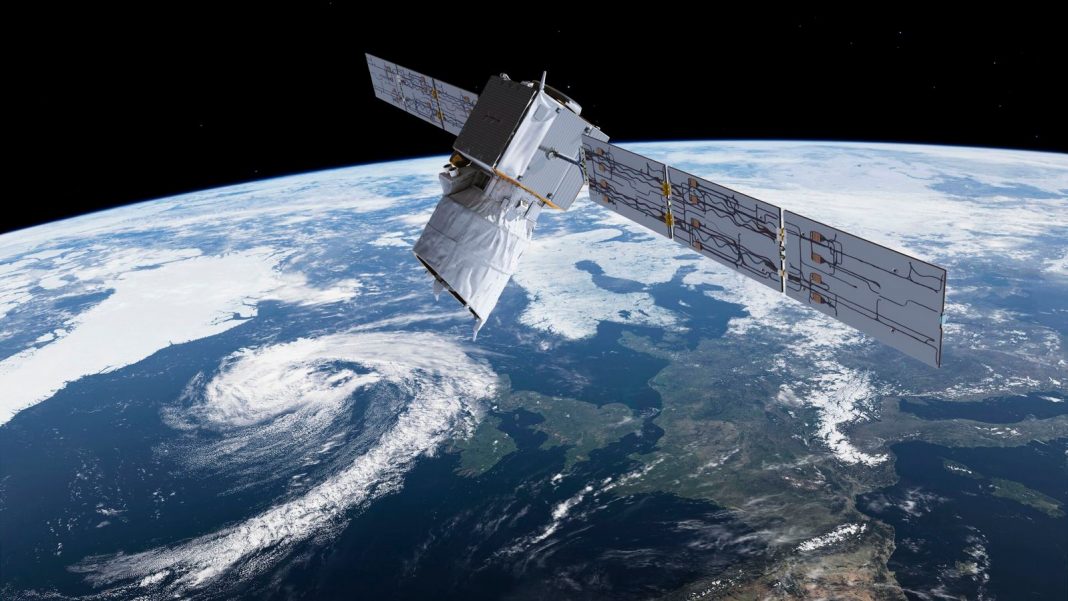A satellite set to return to Earth via a first-of-its-kind assisted re-entry will splash down into the Atlantic Ocean next week.
The European Space Agency (ESA) said the Aeolus craft will be brought back down from orbit in stages, with an operations centre in Germany to guide it on its way.
It will begin on Monday 24 July, when an initial set of manoeuvres will bring it from an altitude of 174 miles (280km) to 155 miles (250km).
It will come down to 93 miles (150km) next Thursday, and – if all goes to plan – will be brought to 75 miles (120km) next Friday.
From there, the satellite is expected to take around five hours to re-enter the atmosphere over the Atlantic.
Only 20% of the craft, which weighs 1.3 tonnes and is the size of a small car, is expected to survive.
The remains will sink, and no recovery attempt will be made.
Read more:
Meet ESA’s first disabled astronaut
Europe’s mission to explore Jupiter’s moons

The satellite prior to launch five years ago. Pic: European Space Agency
‘Real success story’
ESA officials revealed the timeline during a news briefing, having revealed earlier this month that the satellite was falling by about 0.6 miles (1km) a day.
The agency, of which the UK is a member, said this type of assisted re-entry has never been tried. Its little remaining fuel will be used to safely steer it to the splashdown.
Aeolus has been orbiting Earth at an altitude of 200 miles (320km) since 2018, helping improve weather forecasts by measuring wind in the atmosphere.
Simonetta Cheli, the ESA’s director of Earth observation, said the satellite was a “real success story”, having lasted beyond its estimated deployment of three years.
‘Debris neutral’ space missions
It’s hoped its guided return will serve as a turning point for how spacecraft are managed at their end of life.
Holger Krag, head of the ESA’s space safety office, said 2,000 of the approximately 10,000 craft in space are not functional and nothing more than debris.
He said: “Space sustainability must be a global effort, and we must significantly improve the way we design and operate missions today.”
Please use Chrome browser for a more accessible video player

0:56
SpaceX rocket launches for 16th time
The number of space launches each year is growing rapidly, from government agencies like NASA and the ESA to private companies like SpaceX.
The majority of launches are to deploy satellites.
The ESA wants all of its launches to be “debris neutral” by 2030, meaning anything deployed in space has to be returned once the mission concludes.







